Buddhism in Dharwad, Gadag and Koppal
Buddhist Vestiges from an Era of Inter-religious Harmony in Central Karnataka
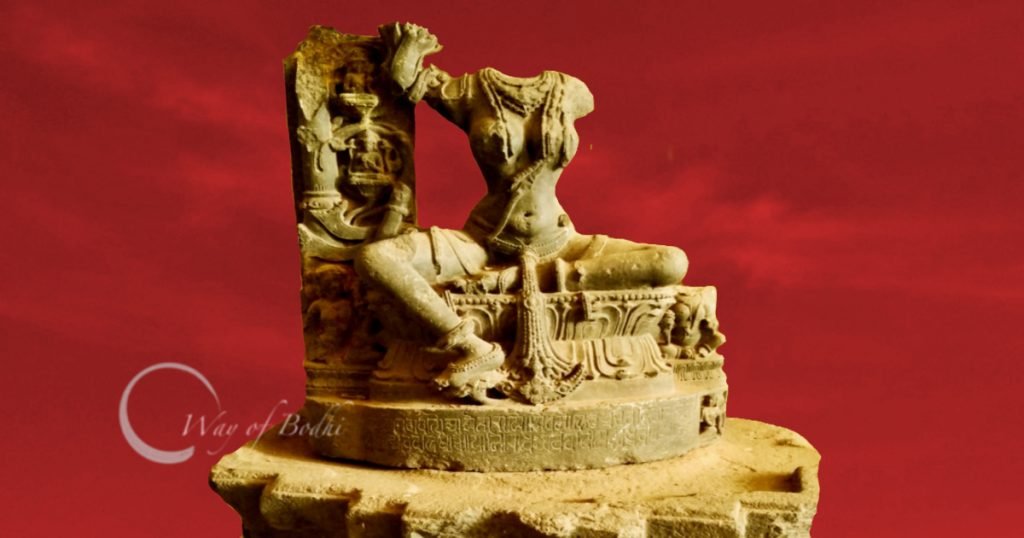
We shall here look into the history of Buddhism in Dharwad, Gadag, and Koppal districts . This region was ruled by Kalyani Chalukyas (Western Chalukyas) and Hoysalas during 10th to 12th Century CE. Although Buddhism was already in a state of decline in Karnataka during this period, Vajrayana practices, particularly that of Tara and Avalokitesvara, were still very active in this region. Many Tara statues with inscriptions were obtained from this area.
The Context of Chatus-Samaya
This period in the Central and Coastal Karnataka was marked by a religious harmony movement, known as Chatus-samaya – the observance of the four (systems). During this period, many kings encouraged the practice of the four systems – Shaivism, Vaishnavism, Jainism, and Buddhism. To the laity, often it meant going for refuge to all the four together without discrimination. To a serious follower of a system, it meant not criticizing or disrespecting any one of these. According to the Belur inscription of Jayasimha II (1022 CE) [Ref 1], Akkadevi, his elder sister and the governor of Kisukada province, is described as practicing the observances of Jina (Jainism), Buddha, Ananta (Vishnu) and Shiva together. In the 12th Century, Shantaladevi, the queen of Vishnuvardhana of Hoysala kingdom, is eulogized in an inscription [Ref 1] as ‘chatus-samaya-samuddharana’ (the one who supports four systems). She primarily followed Jainism and her husband was a Vaishnavite after his conversion by Ramanujacharya.
The chatus-samaya system, at the outset, is a religious harmony movement. However, in our understanding, chatus-samaya diluted the original ethos of Indian philosophical thinking, that of rational examination and critical analysis of various systems. The question of liberation was then turning into purely a sentimental issue and a blind choice. The intellectual debates between systems to evaluate their correctness were no more considered appropriate. In that context, it is very unlikely that a Buddhist would have been able to publicly assert the findings of anatma (selflessness) and anitya (transitoriness of everything) because such arguments directly refute other systems. Refuting the theories of an omnipotent creator god also would have been sacrilegious and sectarian in that era of sentimental harmony. Thus, Buddhism in this region during that period would have lost its rational side and would have been reduced to just another religious system. The practice of Buddhism as part of Chatus-samaya would have thus got limited to deity practices without the view of Buddhism.
Readings from the Dambal Inscription

An inscription (11th Century CE) [Ref 2] obtained from Dambal in Gadag district reveals a great deal about Buddhism in that period. It has a mention about a group of sixteen Shettys (merchants) of Dharmavolal (Dambal), known for ‘catus-samaya-samuddharana’ (supporters of the four systems), who built a Buddha Vihara in Dambal. It also mentions about Shetty Sangavayya of Lokkigundi (Lakkundi) who built a Tara Bhagavati Vihara there. As per the inscription, the sixteen Shettys declared to take care of the expenses for both the Viharas. Dambal was at that time known in the inscriptions as Dharmapolalu, Dhammavolal or Dharmapura. This name points to the fact that this place hosted many Buddhist monasteries in the foregone era.
This inscription is currently in the Lakkundi Museum. Only a broken piece of inscription is available now. Part of it is in Sanskrit and the rest is in old Kannada, but script used in Kannada. The inscription starts with a homage to the Buddha and Tara and then goes on to praise the king, the queen, and the merchants. From this inscription, it can also be seen that by then in this area, Brahminical social order had cast shadows on Buddhism too. The inscription eulogizes the qualities of the merchants who sponsored the Buddha Vihara. One of the qualities, as per the inscription, is that the merchants were already ‘purified’ by the water from the feet of Brahmins. This means that these sponsors were deeply into the chatur-varnya system with the Brahminical supremacy. Their interest was in religious worship of Bhagavati Tara in similar way as how the religious worship is done in temples of Shaivism and Vaishnavism. Jain Yakshas and Yakshis also were also worshipped similarly, though Buddhism and Jainism are fundamentally atheist in their world-view. It is quite possible that in that region during those days, for the laity and sponsors, Buddhist vihara was just one more additional worship place to go for praying for their worldly needs, and not with a correct understanding of Vajrayana. We can imagine that open discussion of Buddhist view and philosophy would have been almost impossible in that context.
Nevertheless, some interesting verses of homage in Sanskrit from the beginning of the inscription is (part of the inscription are in old Kannada):
namo buddhāya namo dharmmāya namaḥ samghāya ||
hari kari shikhi phaṇi taskara nigaḷa
jalārṇṇava piśācha bhaya śamanī
śaśikiraṇakānti dhāriṇi bhagavati tāre namastubhaṃ ||
yā jñānarṇṇava maṃthanāt samuditā prajñeti yā kathyate yā buddhasya
vibhūtidā tribhuvane bodhisvarupā parā yā hrid vyōmni
tathagatasya vasati hphītīva cāndrīkalā sā
tārā bhava tāpa dukha śamanī prāśishṭuvas sarvvadā ||
Homage to the Buddha, Dharma and Sangha!
Homage to Bhagavati Tara!
You are splendorous like the rays of the moon!
You pacify the [eight] fears of lions, elephants, fire, snakes,
Robbers, captivity, [drowning in] ocean and spirits!
You are born from the churning of the ocean of wisdom!
You are renowned as the insight (prajna)!
You bestow the powers of the Buddhas!
In the three worlds, you are the supreme form of awakening!
You reside in the heart-space of the Buddhas,
Like the disk of moon dwelling in the clear sky!
Oh, Tara, please reign over everywhere,
By pacifying the miseries of existence!
Dambal Ruins

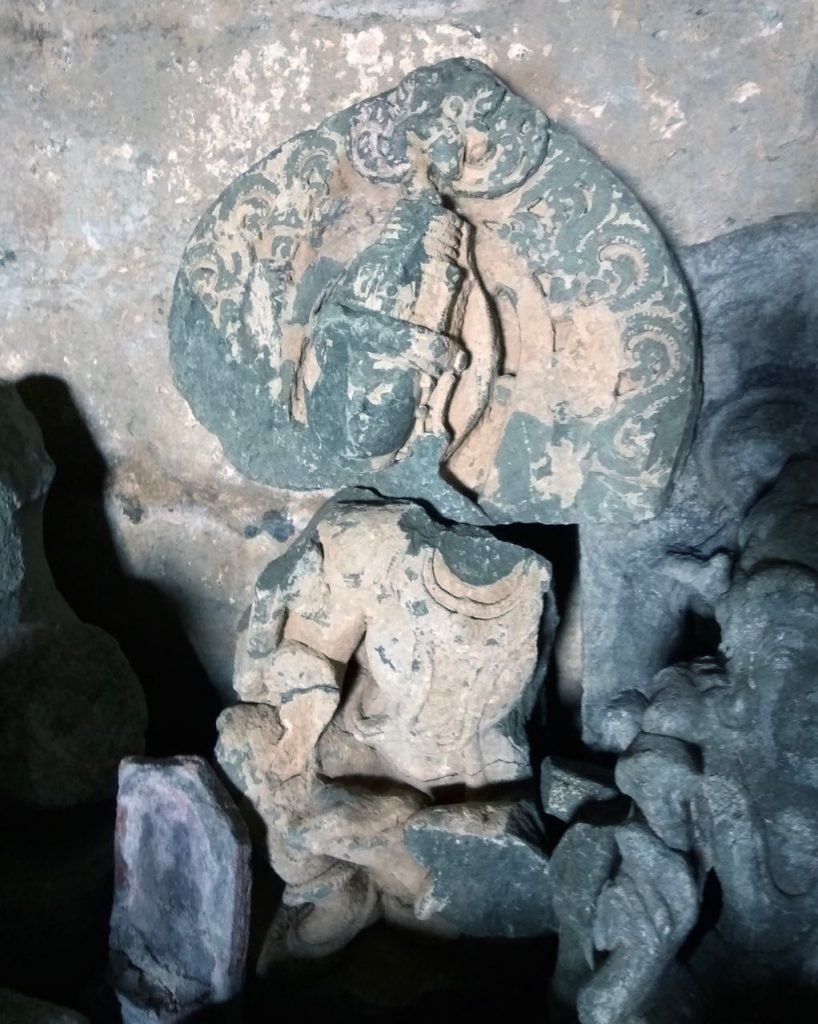
There are also two more inscriptions from Dambal belonging to the 11th-13th Century period. Further, there is a dilapidated fort in Dambal in the centre of the village. The remains of Jain and Buddhist structures and the inscriptions were discovered there. According to a report [Ref 3] in 1959, the ruins of a Jain temple were still present there. However, when we reached, we could find only a small segment of the fort wall and a gate. When we enquired with villagers, they were also not aware of the old structures. Some broken pieces excavated from the vicinity are there in Doddabasappa Temple premises in Dambal.
Lakkundi Statues
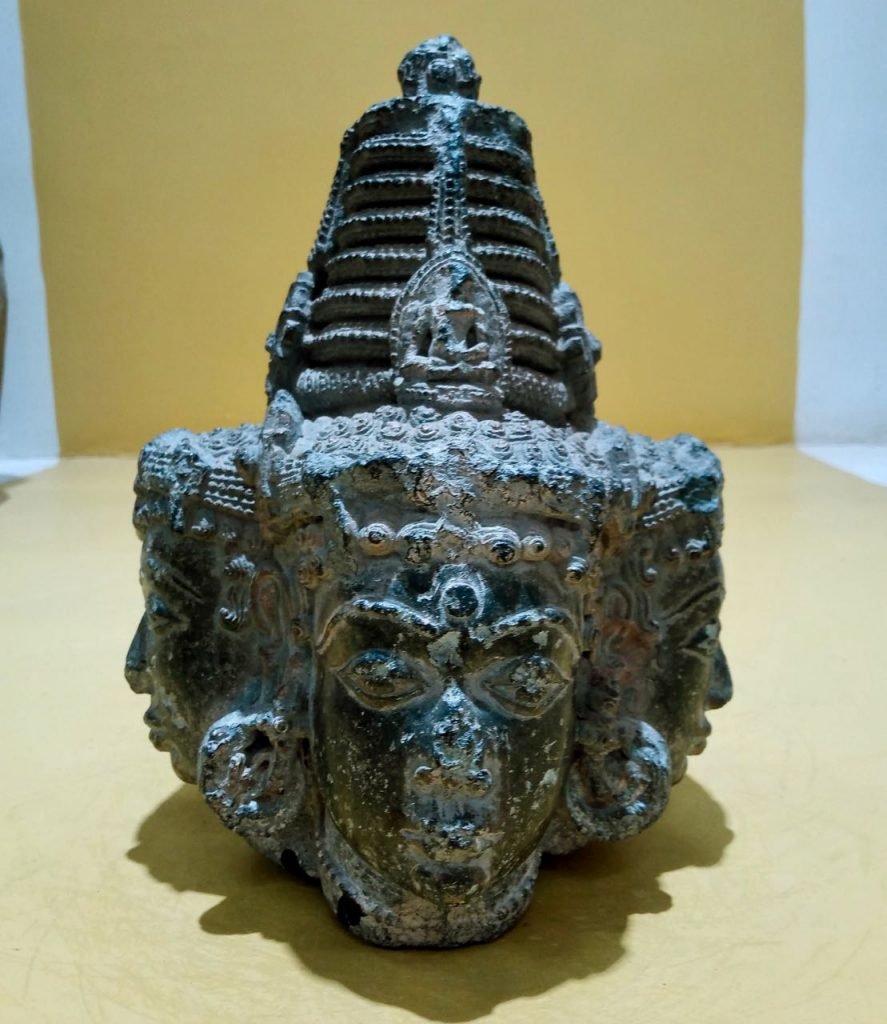

We also found a head (1ft of height) of a Vajrayana statue and another miniature sculpture of Avalokitesvara at Lakkundi Site Museum. Both of these statues are made of brown schist. The head with three faces has a carving of Buddha Akshobhya at his crown. This might be a statue of Manjuvajra.
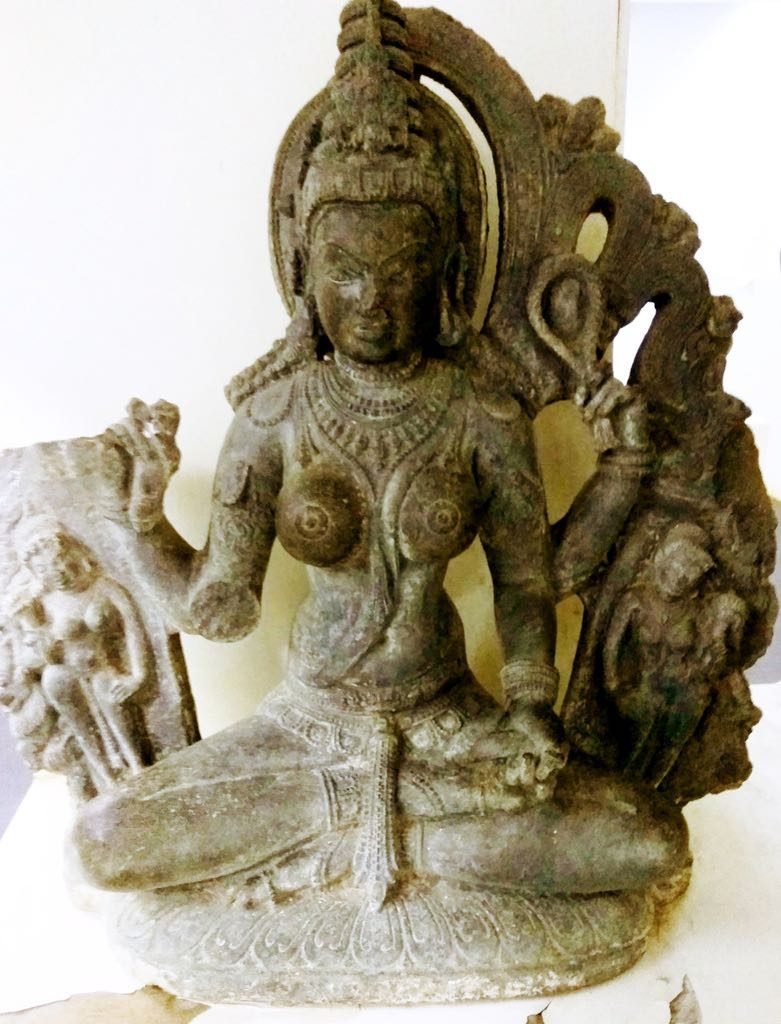
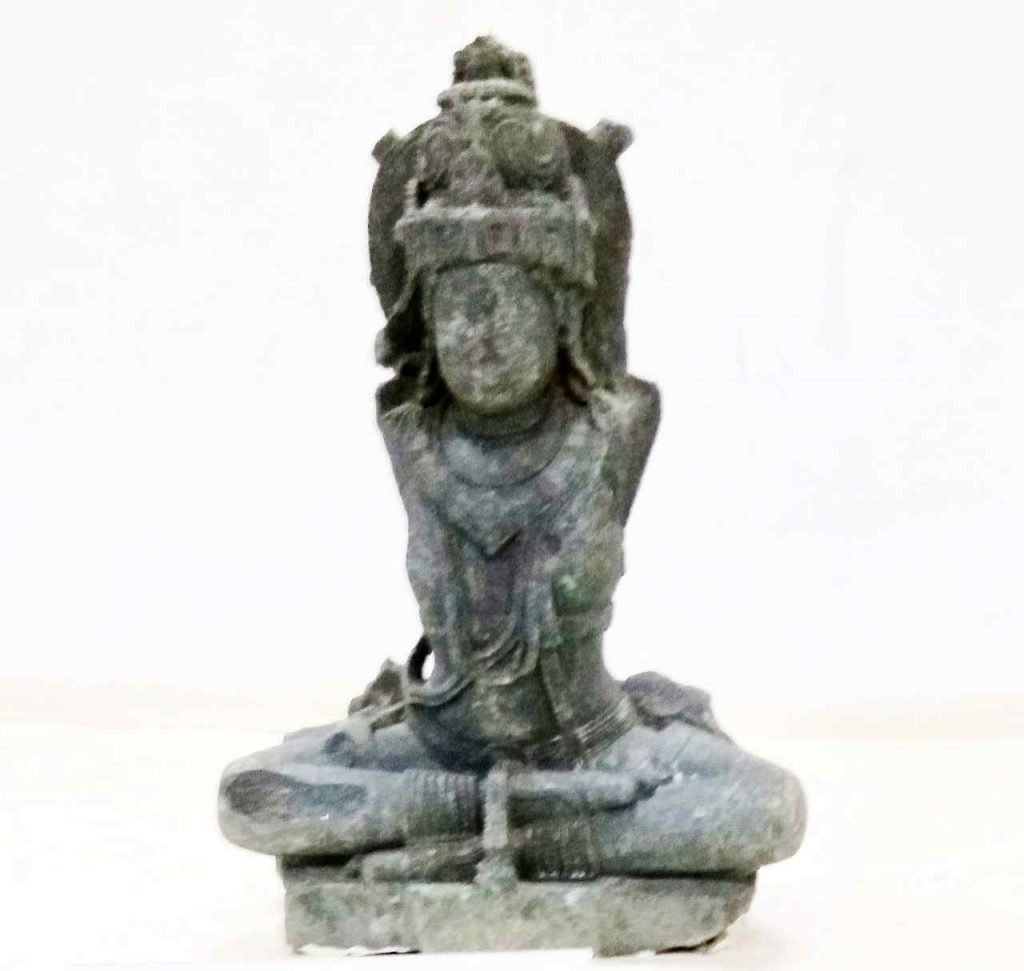

Mundargi Tara
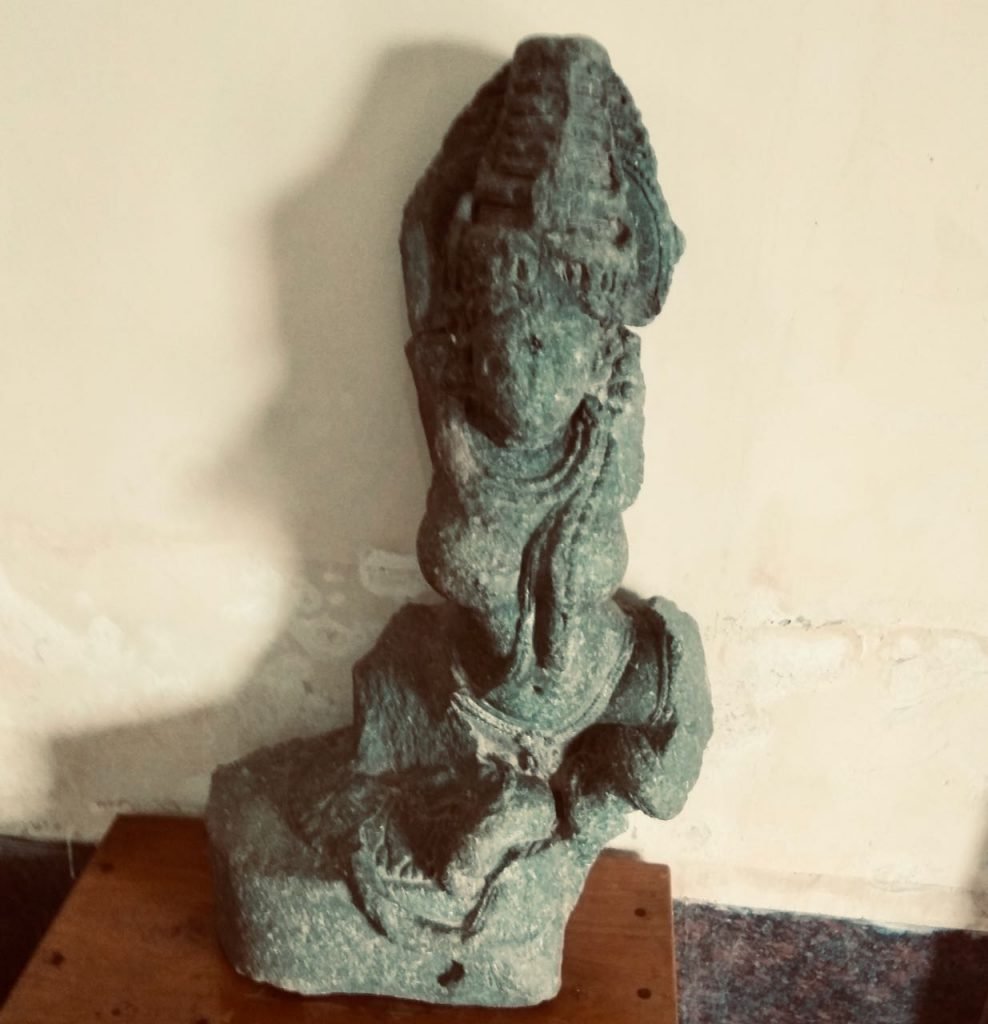
A broken statue of Tara (10th Century CE) is now kept at Gadag Museum. This statue was obtained from Mundargi, in the border between Gadag and Koppal districts.
Koliwad Tara
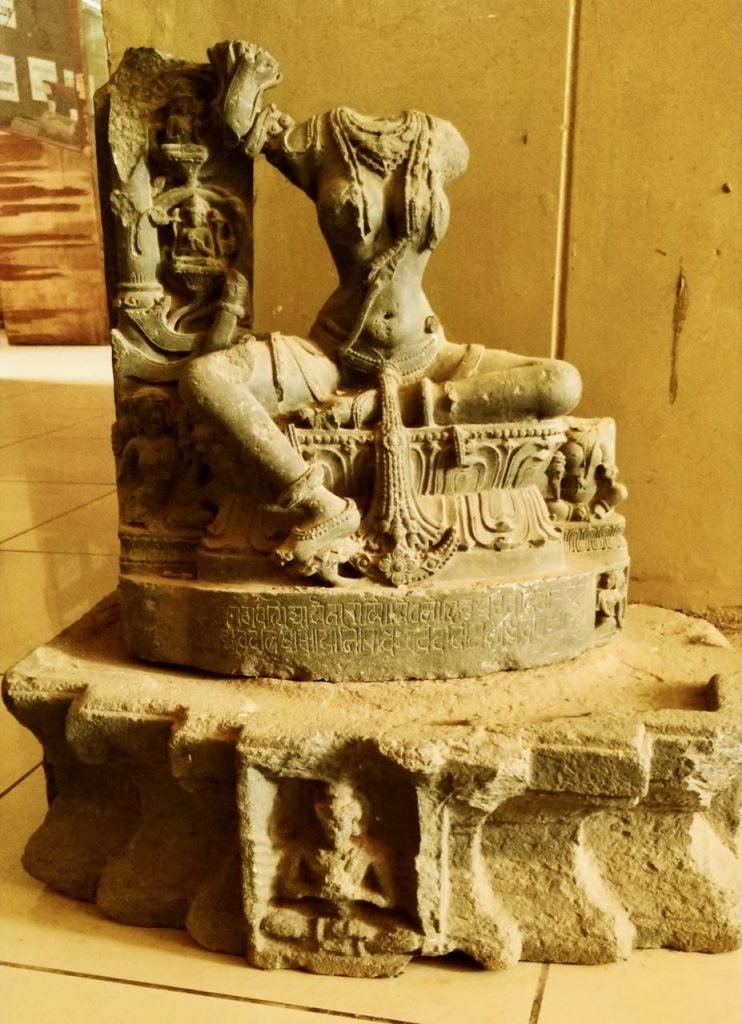
Another broken Tara statue (13th Century CE) with exquisite carvings was obtained from Koliwad in Dharwad district. This is now kept at Hiremath Kannada Research Centre in Karnataka University, Dharwad. The prabha around Tara is broken, but carvings of other deities can be seen on it. The remaining portion of the statue is about 2.5ft in height and the lower base is another 8 inches in height. At the base of the statue, below the lotus flower, a homage to Tara (om namō bhagavatyai ārya tārāyai) and the mantra of dependent arising are inscribed in Nagari script. [Ref 4].
ঀ* oṃ namō bhagavatyai ārya tārāyai ||
ye dharmā hētu prabhava hētum tēshām
tathāgatōhya vadat tēshānchayo
nirōdhaḥ ēvaṃ vādī mahāsraśramaṇaḥ ||
* ঀ is anji symbol, the equivalent of Tibetan ༄, for the auspicious beginning
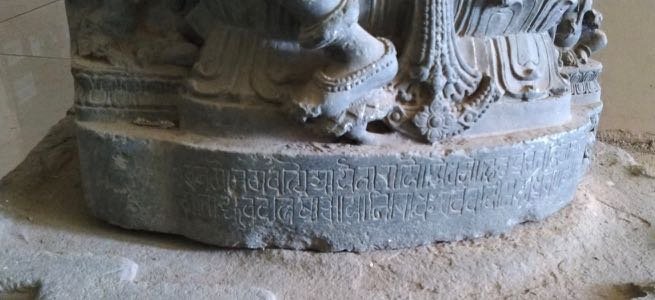
Koppal and Hampi
Koppal district has a Buddhist history from a much earlier era. There are two Ashokan rock edicts at Gavimath and Palkigundu (similar to the Maski edict of Raichur district that we covered already). Near Hampi (in Koppal dist.), there is also a hill with the name Tara-Parvarta in Anegundi. Now, it is thought to be related to another Tara, the consort of Bali and Sugriva from the epic Ramayana, because there is also an Anjaneyadri and Sugriva cave. However, it is also possible that the Tara-Parvata would have got its name due to the presence of another shrine to Bhagavati Tara of Buddhism . This possibility is strengthened because there were many other Tara shrines in this region as we have seen. The other place names such as Anjaneyadri and Sugriva cave would have come up during the later Vijayanagara period.
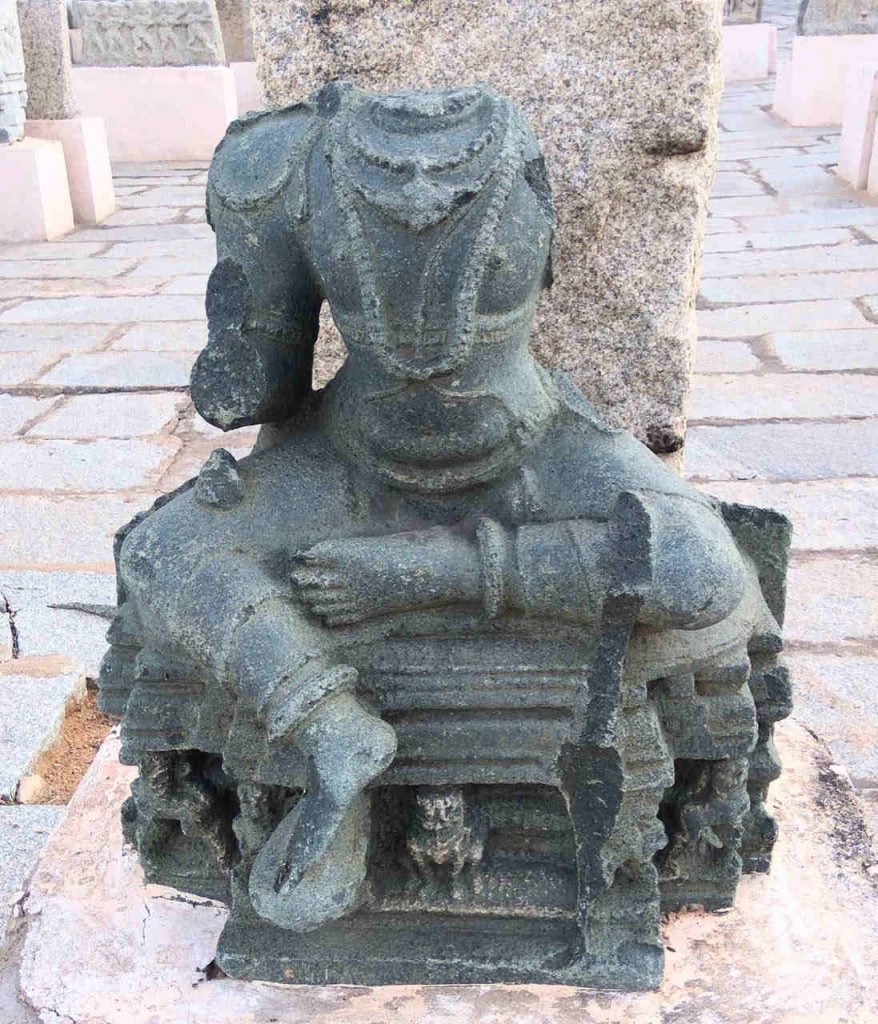
According to Ref 5, three stucco heads of the Buddha and three inscribed panels of Jataka stories were discovered from Hampi. However, we could not trace those in Hampi Museum.
References
namo buddhāya ||
hari kari shikhi phaṇi taskara nigaḷa
jalārṇṇava piśācha bhaya śamanī
śaśikiraṇakānti dhāriṇi bhagavati tāre namastubhaṃ ||
yā jñānarṇṇava maṃthanāt samuditā prajñeti yā kathyate yā buddhasya
vibhūtidā tribhuvane bodhisvarupā parā yā hrid vyōmni
tathagatasya vasati hphītīva cāndrīkalā sā
tārā bhava tāpa dukha śamanī prāśishṭuvas sarvvadā ||
- Putheri (Buddheri) – The Southern most Stupa of Ancient India - January 19, 2023
- History of Buddhism in Kerala - January 12, 2022
- Buddhism in Kallakurichi, Tamil Nadu - March 4, 2021

